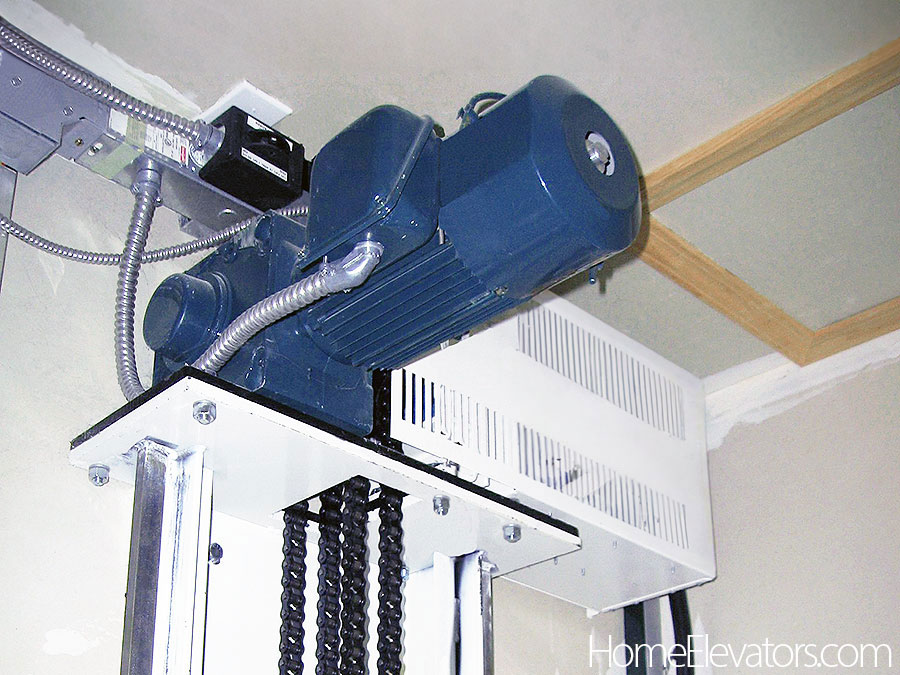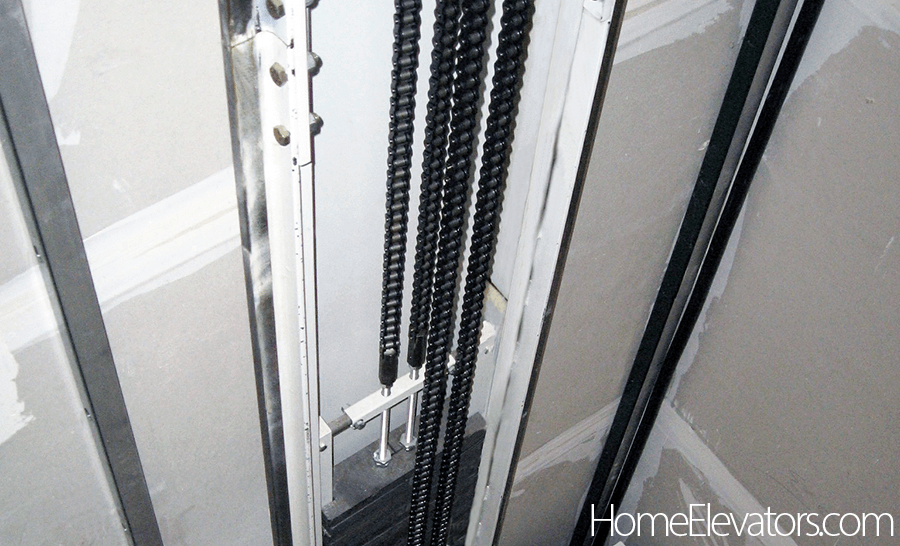Machine room-less elevators are also referred to as MRL. With an MRL elevator, the drive and controller are located in the hoistway eliminating the need for a separate machine room. This can be ideal if you don’t have the space for a machine room but still want a larger cab that can serve up to 5 landings. MRL’S are available in counterweight electric chain drive and cable drive systems.
The Machine room-less elevator offers:
- Reduced footprint
- Standard cab sizes
- Access for multiple floors 2-5
- Protection of control equipment in areas prone to flooding
A key advantage to this type of elevator is protection from water damage. Ideal for installation at waterfront properties or areas that are under floodplain management regulations, the elevator equipment is located high off the ground.
Positioned strategically at the top of the hoistway is the electric motor, this is the motor that enables the entire system to function. This motor turns the chain drive via a gearbox, moving the elevator car and counterweight in opposite directions. The electric motor with the controller at the top of the hoistway also are connection points for the power source and disconnect switches. It’s important to note that this type of system will require two separate access panels, one to service the equipment and one for manual lowering. These access panels are typically located in the ceiling and above the landing door.

Similar to a traction elevator, the weight of the car or cab is balanced by a counterweight system. The weight of the counterweight is similar to that of the elevator car when it is loaded at about half its maximum capacity. This means that the motor doesn’t have to move the entire weight of the elevator car and its occupants. It only needs to move the difference between the weight of the car and the weight of the counterweight. This design greatly improves the efficiency of the system and reduces the amount of power required to move the elevator.
The chains shown here are looped over a geared drive at the top of the elevator shaft and connected to both the elevator car and the counterweight. The drive is powered by an electric motor, allowing the elevator to move up or down as the motor turns one way or the other.
In addition, the counterweight system also helps with energy conservation. When the elevator car is going up empty or only partially filled, the counterweight is going down, making it easier for the motor to lift the car. Conversely, when the elevator car is going down full of passengers, the counterweight is going up, which also reduces the amount of work the motor has to do.
To ensure safe and smooth operations, a traction elevator also incorporates a series of safety systems. These include an emergency brake that can engage the guide rails running up and down the elevator shaft in case of a malfunction or power outage.
With the benefit of a reduced footprint comes a trade-off. In the future, when the elevator needs repairs or maintenance, it can be difficult for a technician to access the equipment. From this perspective, a separate area to house the drive and controller is always recommended. If the space is available, a machine room can simplify these processes and also reduce the cost of upkeep.
